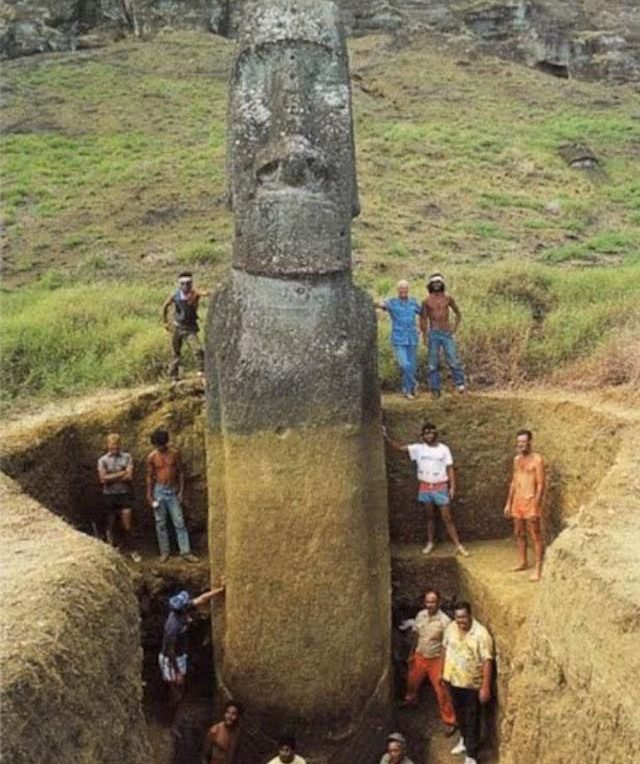Archaeologists from the University of California (UCLA) have discovered the Easter Island heads have intact bodies hidden beneath the surface of the island.
The discovery was part of the UCLA’s ‘Easter Island Statue Project’ to study and preserve the statues.
The Easter Island statues – better known as ‘Moai’ to the Rapa Nui people that crafted the artefacts in the tropical South Pacific- were first discovered on the island between 1100 and 1500AD, with nearly half of them based at the Rano Raraku volcanic cone, the ancient quarry that supplied the stones that were used to carve the figures using volcanic tuff rocks.
It remains a mystery how hundreds of the Moai statues were transported to stone platforms that are scattered around the island.
Easter Island is a volcanic hotspot that was formed by prehistoric volcanic flows made of basalt and andesite.
After being given approval, the UCLA archaeologists excavated two of the Island heads to reveal their hidden bodies.
The torso and truncated waists of the Easter Island heads had been covered by successive mass transport deposits of sediment, gradually burying them over time.
Petroglyph etchings were discovered on the backs of the statues, which were mostly crescent shapes that depicted Polynesian canoes.
According to the archaeologists, the canoes represent the carver’s family, upending more clues about the island’s different family or group structures. Red pigment was also found at the human burial sites on the island that surround the statues, which the research team believes may suggest the Rapa Nui families were buried near their family statue.
The statues were carved and erected with large tree trunks, placed in holes next to the statues, with a rope then being used to lift the statues upright.
The UCLA team studied about 1000 statues on Easter Island throughout the nine-year project.


